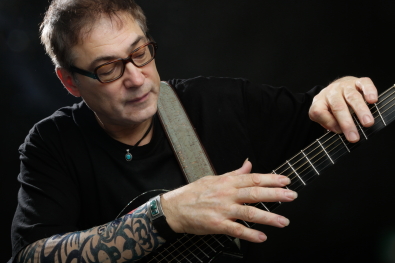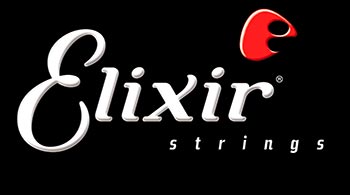Frequently Asked Questions
What are the advantages of Dragonbone®?
This modern material offers many of the qualities that the traditional guitar-maker looks for when choosing tonewoods. I intentionally chose the name Dragonbone to differentiate Leviora’s use of carbon from standard carbon fiber material, the use of which alone won’t guarantee a good sounding guitar. Leviora guitars have full and clear sound. They also have much higher sustain and can be played very dynamically. Tapping and body percussion techniques can be be applied with no fear of damaging the instrument. The piano-like basses and balanced mids lead to a responsive attack throughout the range of the fingerboard. The guitars also have impressive volume that can easily carry even while being played fingerstyle in a live “unplugged” situation or while accompanying a loud voice.
What is the preferred pickup system used in Leviora guitars?
There are many good pickup systems for acoustic guitars these days. Depending on the customers wishes and playing needs, a pickup can be installed either by me or a qualified dealer. I’m an OEM distributor for L.R. Baggs. Their new Anthem system gives a remarkably natural reproduction of the guitar’s tone. The undersaddle pickup used in the system has a lot less of the unnatural “harshness” associated with this type of pickup , while the microphone which is attached directly to the top of the guitar under the bridge, is resistant to feedback.
Does the sound of a Leviora ”open up” like with a wooden guitar?
The sound of solid topped wooden guitars gets better over time. Much of our knowledge of why this happens goes back to the time of Stradivari. It’s a known fact that wood must be properly stored before it’s possible to use it . It was common practice at one point in history to store wood under water. What happens is that a kind of polymerization occurs when wood is stored under water. Crystalline structures begin to form in the fibers. A very similar polymerization process also takes place in the curing of the epoxy resins used in carbon fiber bonding. The crystalline structure is formed during the curing process of Leviora carbon fiber guitars. Instead of taking place underwater, however, it takes place in my workshop!
What material is the bridge made of?
The bridge is also made of carbon fiber laid by hand in a very specific fashion.
This insures that the bridge remains very stiff, yet light. This type of construction allows for the bridge to be lower to top and distributes the sound more evenly across the top of the guitar. The strength of carbon fiber also allows for slotting of the bridge itself which in turn makes string changes considerably easier.
With what strings does the guitar leave the factory?
The guitars are set up at the factory with light Elixir strings for standard tuning and with medium gauge strings for lower tunings like DADGAD. In general one could say: “The fatter the string, the fatter the tone!”
Why is lighter construction so important?
Well, a lighter, stiffer top is necessary for balanced tone and a fast, dynamic attack.
In theory, an infinitely light and stiff membrane would make the ultimate guitar top.
This is what you would need to insure that all of the possible frequencies would be reproduced evenly. This membrane would have to be able to deal with the comparatively high pressure created by the pull of the strings yet still retain resonance…to this end, one needs to build the top lighter. I’ve learned this from my experience as a designer in the aerospace field, which is a constant point of reference for the development of my guitars. The sides of my guitars are intentionally kept a bit thicker to keep the resonance on the top and back of the guitar and not on the sides where it could contribute to feedback. Only when hit with a fairly heavy hand do the sides begin to contribute to the overall volume. All said and done, our guitars are comparable in weight and balance to a lightly built wooden guitar.
What type of bracing is used in Leviora’s guitars?
The tops of Leviora guitars are constructed following a carefully planned series of graduated areas dispersed along the soundboard instead of traditional bracing. By eliminating the bracing, I’m able to build the tops even lighter, stronger and more balanced.
Is a Leviora indestructible?
Carbon fiber is very strong. Thanks to this very important characteristic, my guitars are built with extremely thin layers, which in turn does mean that some attention should be paid with respect to handling of the guitar. Don’t get me wrong, the guitars are very robust, but everything breaks at one point or another. If the guitar were to split somehow, the razor thin edges could possibly hurt someone.
What kind of neck profile do you use?
For my necks I use a soft “V” form at the nut which ends in a pronounced “D” form at the the 12th fret. The thickness of the neck can be varied but the standard thickness is 21mm at the first fret
What kind of influence do environmental changes in temperature and humidity have on your guitars?
Leviora guitars are absolutely roadworthy! Anything from salt-heavy sea air to extremely dry and hot area have no adverse effects on a Leviora. Direct sunlight can be a problem inasmuch that the surface of the guitar can quickly rise to temperatures above 100 degrees Celsius where eventually the material used for the finish could be permanently damaged. Also prolonged exposure in a heated car could lead to damage.
What is the difference between Leviora and other carbon guitars?
Of course there are many carbon guitar makers out there. Most of the guitars from these makes are created by laminating carbon material in a unibody mold for the neck and body. This allows for a relatively inexpensive production of higher numbers of guitars. Leviora guitars are built with a bolt-on neck. This is used to great advantage when dialing in the optimal sound. The neck angle can be adjusted according to need retaining a great deal of flexibility for individual setup. For example: a steeper neck angle for a louder, more robust tone with shorter sustain, or a flatter neck angle for less volume with shimmery highs and longer sustain. Each guitarist has his or her preference and we want to keep that option open for them to decide.
How do I attach a strap pin?
When attaching a strap pin, you need to make sure that you use a metric M4 threaded screw. Carbon is so hard that it will literally cut through standard wood screws. First, drill a 3,3mm hole. Then, thread the hole with the M4 thread bit.
What are the advantages of stainless-steel frets?
Normal alloy frets suffer when used heavily. This can most often be seen in the lower five frets. Fret removal and replacement can be costly and time consuming. Stainless-steel frets are far more durable. Fret jobs done on stainless frets are a bit more involved, but definitely worth the extra effort. Stainless-steel is also an alternative for guitarists with a nickel allergy.
Is it possible to tour the factory?
The factory is not open to the public. If you are in need of more information or need to place an order, please contact us via email or refer to one of our qualified dealers.
How is the action set up?
String height (measured from the top of the fret to the bottom of the string)
Lowest string at the 12th fret: 2,38mm (3/32”)
Highest string at the 12th fret: 1,59mm (2/32”)
Relief at the 5th fret: 0,15mm (.005”)
There is some room to adjust for lower action, but be cautious; vigorous playing might lead to some buzzing.




